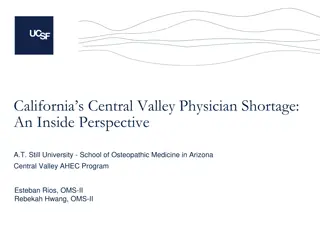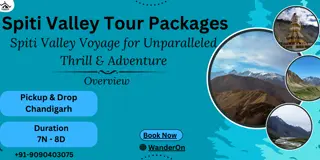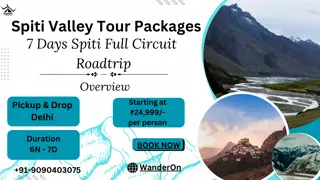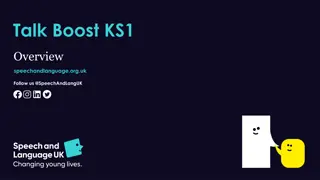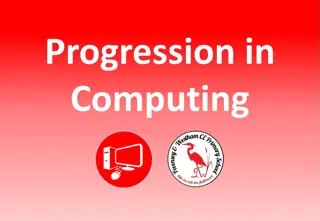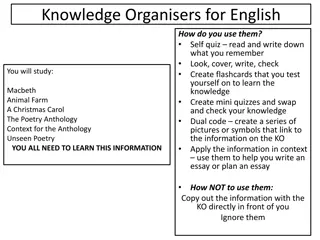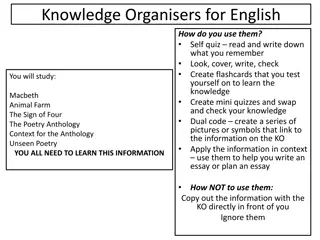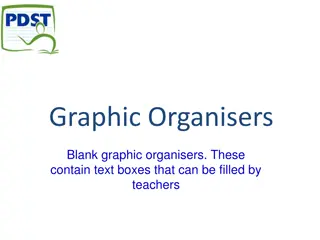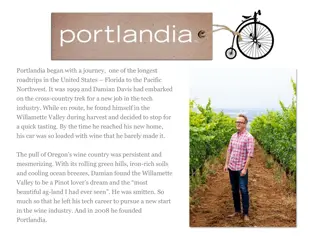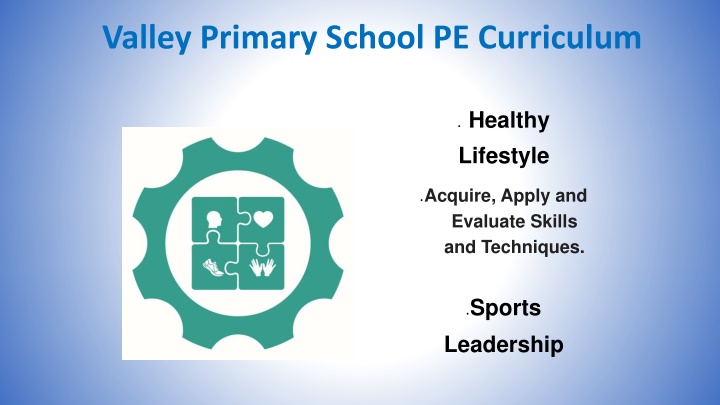
Valley Primary School PE Curriculum: Enhancing Healthy Lifestyles Through Sports Leadership
Explore Valley Primary School's PE curriculum focusing on promoting healthy lifestyles through the acquisition, application, and evaluation of skills and techniques in sports leadership. Students engage in activities like dance and athletics to develop physical abilities, coordination, and teamwork skills while enhancing creativity and expression through movement. Discover the key vocabulary, skills, and values taught in the program.
Download Presentation

Please find below an Image/Link to download the presentation.
The content on the website is provided AS IS for your information and personal use only. It may not be sold, licensed, or shared on other websites without obtaining consent from the author. If you encounter any issues during the download, it is possible that the publisher has removed the file from their server.
You are allowed to download the files provided on this website for personal or commercial use, subject to the condition that they are used lawfully. All files are the property of their respective owners.
The content on the website is provided AS IS for your information and personal use only. It may not be sold, licensed, or shared on other websites without obtaining consent from the author.
E N D
Presentation Transcript
Valley Primary School PE Curriculum Healthy Lifestyle Acquire, Apply and Evaluate Skills and Techniques. Sports Leadership
Physical Education Unit: KS1 Dance Key Vocabulary: Speed The rate at which someonemoves. When lots of shapes and movementsjoin together to make adance. To stay still and steady in a position orshape. To dance without loosing your balance, change the speed and direction youmove. Children will be taught to: Express and communicate ideas and feelings. Learn and understand the term beat . Begin to practise performing different movements in time with the beat. Explore a range of different ways in which you can move and change direction. Link moves together and perform up sequences up to 10 beats. Explore and change different levels and speeds of movement. Use movement imaginatively, responding to stimuli, including music and performing basic skills. Begin to work cooperatively with others when creating a dance. Create a complete dance that is controlled and in time. Routine Balance Control The way youmove: Direction Forwards, backwards, sideways, up anddown. Mood How a character or personfeels. Using your face to show how youfeel: Facialexpression Happy, sad, upset,angry. When somebody explains anddemonstrates their understanding of an image, pieceof writing ormusic. To be able to move with ease andgracefulness. Things to think about: Use all the spacearound you. Use clear creative and emotive bodylanguage. Do your audience knowthe story of yourdance? Can you find the rhythmof music How are you linking your movements into a sequence? InspiringAthlete Diversity Health and Leadership Interpretation Complete a warm-upand cool- down. Are they exercising safely? How is there body feeling during different movements? How does Dance keep you healthy? How can you show and demonstrate sportsmanship? Are you motivating your peers? Fluency The working together of different muscles to carry out different movements. Moving to the beat or rhythm within a piece of music. Co-ordination Timing The topic of the dance or story suchas: Theme adventure, horror, cultural,futuristic. A pattern in which one thing follows another. Sequence Think Sports Leadership Healthy Lifestyle Acquire, apply and evaluate skills Moving to the regular repetition of sounds. Rhythm The different physical aspects a dancer reaches when performing. These are high middle and low. Level
Unit: KS1 Athletics Physical Education Key Vocabulary: Children will be taught to: Learn the difference between running, jogging and sprint. Discuss terms like slower faster. Begin to practise the different ways of jumping (hop, long jump, two-footed and leap). Apply balance and coordination to sports day events (egg and spoon). Throw different objects in a variety of ways Know when to run, jog or sprint and link this to shorter distances, relays, cross country etc. Develop different ways of jumping but using arms and bent knees to improve accuracy and distance. Apply agility, balance and coordination to sports day events (egg and spoon). To stay still and steady in a position or shape. Propel (something) with force through the air by a movement of the arm and hand. To move at a speed faster than a walk, never having both or all the feet onthe ground at the sametime. Push oneself off a surface and intothe air by using the muscles in one's legsand feet. Balance Throw Run Jump Sprint Run at full speed over a shortdistance. Inspiring Athlete Usain Bolt and Jessica Ennis Things to think about: When will you need to run, jog or sprint? Are you jumping with one foot for a hop? Are you landing with control? How does using your arms help you jump? Use and practise the techniques you have been taught when throwing. Health and Leadership Target An aim. Complete a warm-up and cool- down. Are they exercising safely? How is there body feeling during different movements? How can you show and demonstrate sportsmanship? Are you motivating your peers? Jogging Running at a steady, gentle pace as a form of physical exercise. Hop To move by jumping on one foot. Leap Jump or spring a long way, to a great height. Balance The ability to hold your body upright and steady without falling down Think Sports Leadership Healthy Lifestyle Acquire, apply and evaluate skills Co-ordination The ability to move two or more body parts under control, smoothly and efficiently. Stamina Ability to take part in prolonged physical activity.
Unit: KS1 Gymnastics Physical Education Key Vocabulary: Sequence The order of movements within aroutine. . To stay still and steady in a position orshape. To dance without loosing your balance, change the speed and direction youmove. Children will be taught to: Introduce and develop the term level and explore how to change this in gymnastics. Explore different shapes that can be made and ways in which you can travel. Introduce vocab such as along, next to, on to. Begin to link shapes and movements into a sequence. Build upon shape and travel learnt in Yr 1 and introduce balance to a sequence. Perform a variety of balances (recognising the different body parts used) with control. Explore movement and travel involving apparatus. Create a sequence of balances and shapes that are linked with travel in pairs or groups. Show contrasts on use of body and shape (such as small, tall, straight, curved). Balance Control The way youmove: Direction Forwards, backwards, sideways, up anddown. Shapes created through the position ofthe body. The safe method performers have beentaught to perform a skill such as a forwardroll. Body Shape Technique How the performer decides to move withina routine on hands andfeet. To be able to move with ease andgracefulness. A gymnastic skills such as a forward rollor balance. Travelling Fluency Things to think about: Use all the spaceto perform. Use the safe teachnique you have beentaught. Perform movementsand balances withcontrol. Think about the different body parts that you can use to travel, balance and create shapes with. Health and Leadership Inspiring Athlete Max Whitlock Element Complete a warm-up and cool- down. Are they exercising safely? How is there body feeling during different movements? How can you show and demonstrate sportsmanship? Are you motivating your peers? When a balance is performed on a numberof points of thebody. Performing the same movements andphysical actions at the sametime. Tensing muscles to create a stableshape. Making sure the environment aroundand techniques are performedproperly. Point balances Canon Body tension Safety Contrast To compare in order to make differences clear. Think Sports Leadership Healthy Lifestyle Acquire, apply and evaluate skills
Physical Education Unit: OOA and Team Building Key Vocabulary: Children will be taught to: Participate in competitive and cooperative physical activities. Apply creative ideas to tasks Orientate a simple map using features of the area and using a control marker. Continue to apply and develop a broader range of skills. Enjoy communicating, collaborating and competing with each other and how to improve Work cooperatively with a small team or partner to navigate a course. This is the card carried by each team to identify what they find at eachmarker. Control Card The stations scattered throughout acourse that each team shouldvisit. Controlmarker This is setting the map so it is held theright way round. You can find your location onthe map usingfeatures. The ability to perform physical activity for a sustained period oftime. Orientatingthe map. Stamina Things to think about: Orientate a simple map using the control marker. Plan a safe route visiting all markers. Communicate with your team mates. Is your map the right way? Health and Leadership Communicating and working with others to establish agoal. Complete a warm-up and cool- down. Are they exercising safely? How is there body feeling during different movements? How can you show and demonstrate sportsmanship? Are you motivating your peers? Teamwork A set of symbols that marks human and physical features on amap. Key The direction they aim to go in order the visit each controlmarker. Route The plan and approach taken to try to win the competition. Tactics Think Sports Leadership Healthy Lifestyle Acquire, apply and evaluate skills
Unit: KS1 Multi Skills Links to Invasion games in KS2 Physical Education Key Vocabulary: Children will be taught to: Introduce and develop ABC (Agility, Balance and Coordination). Explore different ways of moving and speeds, showing control. Be able to coordinate moving in different directions (side to side, backwards etc). Understand the difference between A, B and C. Show clear control when changing direction and between different movements. Apply these skills into different games. Make simple decisions about when /where to move in game Perform some dribbling skills with hands, feet and a stick using space. Balance To stay still and steady in a position orshape. To perform movements and skillswithout loosing your balance, change the speedand direction youmove. Movement made towards theoppositions goal within a game to scorepoints. Movements made to protect thehome teams goal, preventing the oppositionfrom scoring. The positions,whosejobitis to stopthe opposition fromscoring. An act of taking the ball forward with repeated and controlled touches or bounces. The ability to move two or more body parts under control, smoothly and efficiently. Control Attack Defend Defence Things to think about: Be aware of those around you when running. When you need to change direction when moving? Why is it important to avoid others sometimes? Health and Leadership Dribble Inspiring Athlete Eni Aluko Complete a warm-up and cool- down. Are they exercising safely? How is there body feeling during different movements? How can you show and demonstrate sportsmanship? Are you motivating your peers? Coordination Inspiring Athlete Max Whitlock The ability to change the direction of the body in an efficient and effective manner. Agility The rate at which someone or something is able to move. Speed .A contest carried on following set rules amusement, exercise or reward. Game Think Sports Leadership Healthy Lifestyle Acquire, apply and evaluate skills Sports to consider introducing Planning something to achieve a goal Hockey Tag-rugby Football Netball Basketball Tactic To change place or position. Move
Unit: KS1 Multi Sports Link to basic throwing and catching Physical Education Key Vocabulary: Children will be taught to: Introduce bounce, underarm and overarm throwing techniques. Explore throwing and catching and dribbling with different objects (beanbags, small balls, uneven balls, foam balls). Be aware of when to use the different techniques or balls (discuss sports). Master receiving skills ( stop, trap and catch). Develop accuracy of the different throws learnt in Year 1 and begin to apply them into different situations (overarm for distance etc). Introduce movement to throwing and catching (not to always be standing still). Introduce striking techniques (with larger balls to begin with) and body positioning. Apply skills into a game (handball/cricket). An object throw from the shouldand then forced forward. This throw isgreat for longerdistances. Using an object to throw over ashort distance accurately. It involves the transference of weight forwards as the straight-throwing arm swings through from the back to the front to release the object at hipheight. Attempting to return the ball orobject before the striking team complete a run between 2 markers. Hitting a ball or object into anopen space in the playingarea. When the ball is passed to a player. Theyare able to stop it and move on withit. Overarmthrow Underarmthrow Field Things to think about: When would you use the different throwing techniques? When catching, cup your hands and reach with straight arms. When passing or throwing step forward into it. Health and Leadership Inspiring Athlete Joe Root Strike Complete a warm-up and cool- down. Are they exercising safely? How is there body feeling during different movements? How can you show and demonstrate sportsmanship? Are you motivating your peers? Receive Being able to make passes and shotsmaking sure they get to the location the playeris aimingfor. Accuracy Sending the ball to another member ofyour team. To perform movements and skills without loosing your balance, change the speed and direction you move. Passing Control Think Sports Leadership Healthy Lifestyle Acquire, apply and evaluate skills Sports to consider introducing.. Handball Cricket Rounders Tennis (striking)

